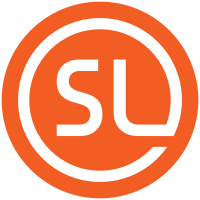Type Foundries—What are you looking for in submissions?

Troy
Posts: 2
Hi everyone, I coach designers on how to make type, and I often get the question, "How and where can I submit my typeface for consideration?". I can only speak from my experience, so I would love to broaden my response by hearing from you about what you are looking for. Every foundry has different requirements, so I'm open to any comments or questions you think I should ask. I would love to speak to anyone interested in sharing your thoughts.
0
Comments
-
I will advise designer to promote their typefaces in their own websites in first place, instead of submitting it to another people.Troy said:and I often get the question, "How and where can I submit my typeface for consideration?"
It may the most obvious way to proceed to some, but it may be a totally new and radical idea to others.
Not only about fonts, but in all areas of life.
For example, in Western culture, job seekers typically present their resumes to multiple companies in pursuit of employment opportunities. Contrastingly, in Indian culture, individuals often seek out a specific person they admire or respect —effectively 'choosing' their future boss— and then contemplate how they can contribute to that person's endeavors.
While both approaches aim to secure employment, they reflect opposite perspectives: 'seeking a job' versus 'choosing a boss'. You can apply a similar logic to your fonts
Or even better, do both things at once!
6 -
It is hard to give a short answer without elaborating on the current trends in the font market. But as a quick input, I would say it depends on the long-term strategy and ambitions.
Does one plan to produce more typefaces in the future or just to leverage the potential of that one — made as a graphic design side adventure? If the former, it is a chance to start growing own business around it. If later, it makes sense to offer it through the store (rather than the foundry).
The overall impression is that the font market has been in crisis in recent years. I have no experience partnering with foundries (only directly with stores), but if the foundry struggles to sell its own typefaces it is a question to which point they will be enthusiastic about promoting the third-party product (where they earn less). Not to mention that many foundries are further distributed through stores, which means even lower commissions for the original type designer.
That said, there are font stores that keep up a fair relationship with type designers. I would suggest Font Brothers with the best commission on the market (65% goes to the designer, and it will remain so). Stuart Sandler from FB is active here.
Also, Type Network and I Love Typography. I know more about TN since Matthew regularly shares news and information about their business here. But heard a few nice reviews about ILT as well.
One thing worth mentioning is that running own business enables agile font development (through font versioning). That way one gradually improves the product, has regular communication with customers that follow the progress, and earns while working.
2 -
Thank you for the kind words @Igor Petrovic and to Troy's initial question some clarification is in order. Submitting a typeface to a foundry is only relevant to established font foundries who release works with 3rd party type designers. Font Bros is a distributorship like the aforementioned ones in Igor's response and I'm happy to speak to what we look for in foundries we desire to represent.
* Multiple Font Families - Ideally the foundry has at least 2-3 families at minimum to launch with. Granted, if it's a really large family with many weights, that's an exception but usually the best chance of a sale is having at least a few different offerings at launch.
* Originality to the Marketplace - This one is pretty easy to explain, take a peek at CM: https://creativemarket.com/fonts/script - There are some lovely scripts but if I was holding a police line-up and asked you to identify a specific script, I'm quite certain the wrong one would go to the chair. This style of thinline modern script was released in the early 2000s and it has been copycatted in earnest since then and as you can imagine, it's value has plummeted because if you don't find one you like, another one will be released the next week and it'll be on sale for $5 bucks. If you're going to spend time making a font family, take a look at what's out there and make sure yours is an original point of view.
* Pricing - Pricing is a personal decision but generally we prefer that individual weights are around $12 USD at the low end mostly because they do have real value to the design and for the designer. Anything priced less than that sort of deflates this perceived value and means you have to sell 2X to earn what you could've just starting at a fair market rate which you can find by just looking around reseller sites to see what the market is charging. Not to mention, it's really hard to ask five figures for a font license upgrade when the Desktop Use license is $6 USD.
* Craftsmanship - Take as much time drawing the non A-Z forms as you did the letters themselves. Take care to properly space exhaustively and kern only as needed and seek a minimal character set/language set you want to support. Also, make sure you take time to really dial in the width of the space character, lots of fonts fail this test honestly. It's these details that really set a well made font apart from a hobbyist font even if you aren't supporting hundreds of languages (It's pretty easy to support most with just a few accented composite characters FWIW)
* Font Graphics - I blame MyFonts (circa 1999) when posters first became required because while many of us are talented font designers, most of us aren't amazing graphic designers. I don't think font posters have to be amazing but boy they sure do help sell the font by showing off it's vibe to potential customers. Like anything, find a design style that shows off the font and if you're not happy with the result, ask for feedback or hire a talented graphic design whose work you do like. We definitely do look at font posters so take care to create good-enough ones.
* Where Else is it Distributed? How enforceable is the EULA? - This is really something we do look at closely because we know that if a foundry is selling their fonts at a distributor that uses very loose EULA terms, the chances of us being able to secure a larger OEM license for them tanks that opportunity dramatically. In a perfect world, your fonts should be priced the same and use the same or very similar EULA terms at every reseller. As a reseller, our goal is simple, to help you make money for your work that you wouldn't otherwise be able to on your own. The only way we can make the most money for you is to assure you're taking care to keep your terms similar so that a potential OEM license doesn't fall through because you forgot that one of your resellers grants unlimited uses at the base price of the Desktop Use license.
* Is it a Good Fit? - It's a fair question, there are some distributors that are a better fit for your work than others. Just like an actor getting cast for a role, even if you're eager to get the part, it may not be the movie you wanna be in let alone watch. Make sure the distributor feels like a natural complement to your work, one that you feel represents your work in a good light, has an established reputation, experience with licensing and that you're both coming to the table with mutual interest. Not everybody who reaches out to us is a good fit and usually it's due to one or more of the items I listed above.
I'm sure there are a lot of things folks can pick apart here but this is just an honest take to lay some groundwork for up and coming font designers who want to work with a distributor.12 -
Pricing is a personal decision but generally we prefer that individual weights are around $12 USD at the low endI do not take submissions, and only market my own work, but I've always been shocked at how most of the industry price individual fonts.5
-
@James Montalbano shocked in what ways? That the pricing is low? Is high? That there is a surprisingly large or small discount to buy the full family compared to the individual font price?0
-
@Thomas Phinney Shocked at how low the pricing is.7
-
@James Montalbano for clarity, $12 USD is what I'd consider the 'floor' on pricing but generally a 5 End User Desktop Use license in general is $20-30 USD based on what is typically listed at most distributors and again, per single weight, not family.
I recall at one point a foundry owner shared his pricing schema for families which was the base price + $10 USD per additional weight to build in a bulk discount.
Again, pricing remains subjective and is always personal taste as it should be but it should also reflect the marketplace IMHO.0 -
The industry standard for font licensing prices has been $39 to $59 for well-developed fonts for many years. However, many foundries charge more. The design of a well-designed font with an extensive character set requires a significant amount of time and effort. Furthermore, the creation of marketing materials also requires time and resources. It is important to note that these prices only represent turnover. The profit is calculated after deducting all other foundry costs.
For companies that purchase font licences for various projects or corporate branding, the price is not the primary determining factor; rather, it is the suitability of the fonts for the company that is of paramount importance.2 -
This might be a topic for a seperate thread, but I wonder how lower-but-not-free pricing compares to higher pricing in terms of success for the foundry? I know there are foundries I adore but I have never been able to justify to myself licensing type from as their prices are just too high for me. Yet, I may spend the same amount if total money elsewhere where I feel I’ve getting ‘better’ value. This is usually expressed in family size, so extra weights and styles. I also buy a lot of my type on sale, which I’m aware is it’s own thorny topic too.0
-
I’ve noticed there's no real benefit in pricing a single style 1-5 user desktop license below about $14 USD—it doesn’t increase sales volume. However, keeping font families priced under $50 seems to make a difference. Dropping very low-sellers to $5 or less doesn’t help either. If a font isn’t selling, it's just not selling. That’s how a few of my more experimental pay fonts ended up in the public domain. If no one wants to pay $3 for it, it’s time to put the old horse down. If you’re thinking about putting your failed fonts in the bargain bin, don’t get your hopes up.7
-
Speaking for Darden Studio only:
We don't care about the state of done-ness. In fact, you're probably better off submitting to us long before you think you're done because we do a lot of art direction. A few designers have submitted fonts they felt were done and been discouraged by how much more work we wanted to do.
Darden Studio isn't just publishing work, we want to collaborate with the designer to produce a font that we think will get used a lot (so yes, also commercially successful). We will consider anything that either is currently broadly useful (both text and display) or can be made so. A successful submission is also introducing something new to it's genre, doing something surprising and interesting that will distinguish it in the market.
If anyone want to submit to us you can email me or use our contact form.8 -
I would be interested to know whether only foundries from the USA are represented on Typedrawers.com or also from Europe?
1 -
There are many TypeDrawers members in Europe and other parts of the world. You can see the full member directory here, and you can filter the list by country – like France, Germany, Italy, UK or Ukraine. Unfortunately, those are very partial listings, as a lot of folks haven’t filled out the location part of their profile yet. Also, the location field is also open to any text, so some have only added the city, rather than country. Here’s London, for example.
3 -
Contrastingly, in Indian culture, individuals often seek out a specific person they admire or respect —effectively 'choosing' their future boss— and then contemplate how they can contribute to that person's endeavors.@PabloImpallari Back in mid 80s there as a job hunting strategy going around called "The Boll Letter", where the job seeker would send a personal hand written letter on monarch sized stationary to the person they wished to work for. I used it once and I did get a nice response from the then art director of Rolling Stone. No job came of it, but the response was genuine. I don't think "The Boll Letter" is used anymore.
3 -
A few rudimentary notes in regards to what foundries may look for, among other things:
- A typeface that feels fresh and original (which can be very subjective).
- A typeface that's in a genre not already present in the foundry's catalogue.
- A typeface that has a story to it and communicates a simple concept convincingly.
- A typeface that has a high level of execution. Not necessarily a finished project, but it has to shine through that the designer knows what s/he's doing.
1 -
Kasper Pyndt said:A few rudimentary notes in regards to what foundries may look for, among other things:
- A typeface that feels fresh and original (which can be very subjective).
- A typeface that's in a genre not already present in the foundry's catalogue.
- A typeface that has a story to it and communicates a simple concept convincingly.
- A typeface that has a high level of execution. Not necessarily a finished project, but it has to shine through that the designer knows what s/he's doing.
I would say that not all foundries are the same. There are simply big differences that need to be taken into account. On the one hand, a foundry can consist of one or two type designers working together as partners. Such a small foundry can be very successful.On the other hand, a foundry can also be a group consisting of several business partners, type designers, marketing and sales staff. Such a large foundry has different marketing and sales possibilities than a small foundry.-2 -
@Typedesigner
I would very much agree that not all foundries are the same, and that it's very hard to make generalisations as to requirements for submissions. That's why I wrote "may look for" as opposed to "are looking for" :-)0 -
I really appreciate the comments from everyone in this thread. I’m hearing similar views from others.
I agree with what @JoyceKetterer said, I like to collaborate with those that I want to represent. I think the relationship must comes first. I propose they present what I like to refer to as a Font/Type Seed, ie: a limited character-set, to gain interest before spending three years of their life making something they want to submit. Often foundries support the designer with kerning and other production anyway, and like it done in a particular way, so finishing a typeface before submission is almost going too far.
Thanks again for all the very insightful comments.0
Categories
- All Categories
- 46 Introductions
- 3.9K Typeface Design
- 487 Type Design Critiques
- 564 Type Design Software
- 1.1K Type Design Technique & Theory
- 656 Type Business
- 861 Font Technology
- 29 Punchcutting
- 520 Typography
- 119 Type Education
- 324 Type History
- 77 Type Resources
- 112 Lettering and Calligraphy
- 33 Lettering Critiques
- 79 Lettering Technique & Theory
- 558 Announcements
- 94 Events
- 114 Job Postings
- 170 Type Releases
- 179 Miscellaneous News
- 276 About TypeDrawers
- 54 TypeDrawers Announcements
- 120 Suggestions and Bug Reports










